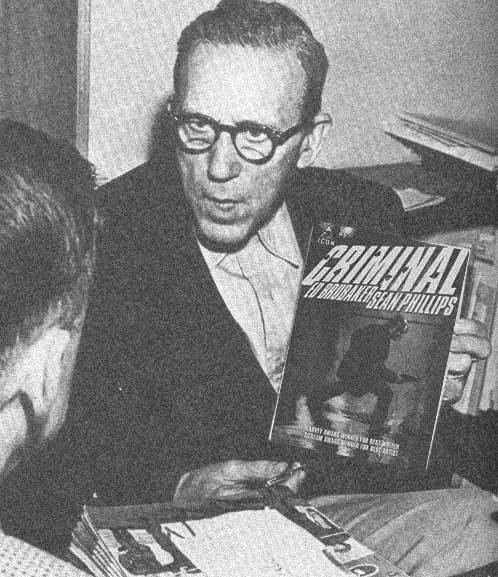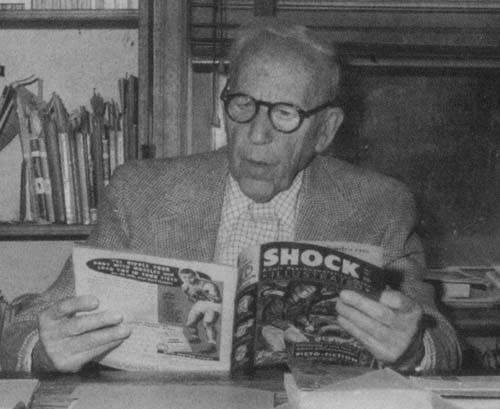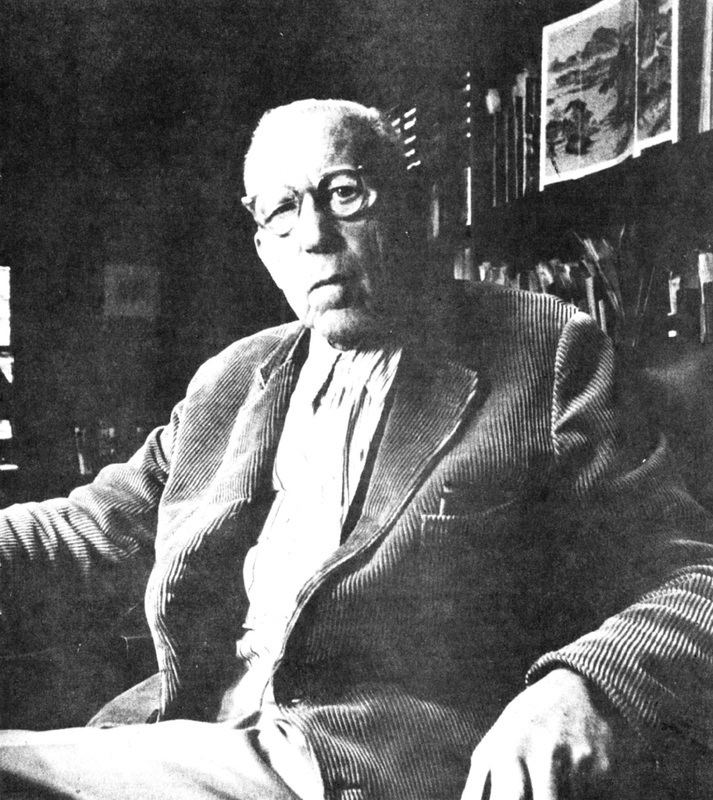Name Fredric Wertham | Role Psychiatrist Education University of Wurzburg | |
 | ||
Spouse Florence Hesketh (m. 1927) Books Seduction of the Innocent, The show of violence | ||
Diagram for deliquents kickstarter promo
Fredric Wertham (; March 20, 1895 – November 18, 1981) was a German-educated American psychiatrist and crusading author who protested the purportedly harmful effects of violent imagery in mass media and comic books on the development of children. His best-known book was Seduction of the Innocent (1954), which suggested that comic books were dangerous to children. Wertham's criticisms of comic books helped spark a U.S. Congressional inquiry into the comic book industry and the creation of the Comics Code. He called television "a school for violence", and said "If I should meet an unruly youngster in a dark alley, I prefer it to be one who has not seen Bonnie and Clyde."
Contents
- Diagram for deliquents kickstarter promo
- Diagram for delinquents fredric wertham and the evolution of comic books promo
- Early life
- Career
- Seduction of the Innocent and Senate hearings
- Accusation of falsified data
- Later career
- Death
- Legacy
- References

Diagram for delinquents fredric wertham and the evolution of comic books promo
Early life

Wertham was born on March 20, 1895 in Munich, under the name Friedrich Ignatz Wertheimer. He did not change his name legally to Fredric Wertham until 1927. He studied at King's College London, at the Universities of Munich and Erlangen, and graduated with an M.D. degree from the University of Würzburg in 1921. He was very much influenced by Dr. Emil Kraepelin, a professor of clinical psychiatry at the University of Munich, and worked briefly at the Kraepelin Clinic in Munich in 1922. Kraepelin emphasized the effects of environment and social background on psychological development. Around this time Wertham corresponded and visited with Sigmund Freud, who influenced him in his choice of psychiatry as his specialty.
Career

In 1922, he accepted an invitation to come to the United States and work under Adolf Meyer at the Phipps Psychiatric Clinic at Johns Hopkins Hospital in Baltimore, Maryland. He became a United States citizen and married the sculptress Florence Hesketh in 1927. He moved to New York City in 1932 to accept a senior staff position at the Bellevue Mental Hygiene Clinic, the psychiatric clinic connected with the New York Court of General Sessions in which all convicted felons received a psychiatric examination that was used in court. In 1935 he testified for the defense in the trial of Albert Fish, declaring him insane. In 1946, Wertham opened the Lafargue Clinic in the basement of St. Philip's Church in Harlem, a low-cost psychiatric clinic specializing in black teenagers. The clinic was financed by voluntary contributions.
Seduction of the Innocent and Senate hearings

Seduction of the Innocent described overt or covert depictions of violence, sex, drug use, and other adult fare within "crime comics"—a term Wertham used to describe not only the popular gangster/murder-oriented titles of the time but also superhero and horror comics as well—and asserted, based largely on undocumented anecdotes, that reading this material encouraged similar behavior in children.
Comics, especially the crime/horror titles pioneered by EC Comics, were not lacking in gruesome images; Wertham reproduced these extensively, pointing out what he saw as recurring morbid themes such as "injury to the eye" (as depicted in Plastic Man creator Jack Cole's "Murder, Morphine and Me", which he illustrated and probably wrote for publisher Magazine Village's True Crime Comics #2 (May 1947); it involved dope-dealing protagonist Mary Kennedy nearly getting stabbed in the eye "by a junkie with a hypodermic needle" in her dream sequence). Many of his other conjectures, particularly about hidden sexual themes (e.g. images of female nudity concealed in drawings of muscles and tree bark, or Batman and Robin as gay partners), were met with derision within the comics industry. (Wertham's claim that Wonder Woman had a bondage subtext was somewhat better documented, as her creator William Moulton Marston had admitted as much; however, Wertham also claimed that Wonder Woman's strength and independence made her a lesbian.) Citing one of Wertham's arguments, that 95% of children in reform school read comics proves that comics cause juvenile delinquency (this is an example of the well-known logical fallacy correlation implies causation), Stan Lee recounted that Wertham "said things that impressed the public, and it was like shouting fire in a theater, but there was little scientific validity to it. And yet because he had the name doctor people took what he said seriously, and it started a whole crusade against comics."
Seduction of the Innocent also analyzed the advertisements that appeared in 1950s comic books and the commercial context in which these publications existed. Wertham objected to not only the violence in the stories but also the fact that air rifles and knives were advertised alongside them. Wertham claimed that retailers who did not want to sell material with which they were uncomfortable, such as horror comics, were essentially held to ransom by the distributors. According to Wertham, news vendors were told by the distributors that if they did not sell the objectionable comic books, they would not be allowed to sell any of the other publications being distributed.
The splash made by this book and Wertham's previous credentials as an expert witness led to his appearing before the Senate Subcommittee on Juvenile Delinquency led by anti-crime crusader Estes Kefauver. In extensive testimony before the committee, Wertham restated arguments from his book and pointed to comics as a major cause of juvenile crime. Beaty notes "Wertham repeated his call ... [for] national legislation based on the public health ideal that would prohibit the circulation and display of comic books to children under the age of fifteen."(Beatty, 157) The committee's questioning of their next witness, EC publisher William Gaines, focused on violent scenes of the type Wertham had decried. Though the committee's final report did not blame comics for crime, it recommended that the comics industry tone down its content voluntarily; possibly taking this as a veiled threat of potential censorship, publishers developed the Comics Code Authority to censor their own content. The Code banned not only violent images but also entire words and concepts (e.g. "terror" and "zombies") and dictated that criminals must always be punished—thus destroying most EC-style titles, and leaving a sanitized subset of superhero comics as the chief remaining genre.
Accusation of falsified data
Wertham's original research materials for "Seduction of the Innocent" became available in 2010. Carol Tilley, Assistant Professor at the Graduate School of Library and Information Science at the University of Illinois, investigated his research and found his conclusions to be largely baseless.
Wertham manipulated, overstated, compromised, and fabricated evidence—especially that evidence he attributed to personal clinical research with young people—for rhetorical gain.
Among the criticisms leveled at Seduction of the Innocent are that Wertham used a non-representative sample of young people who were already mentally troubled, that he misrepresented stories from colleagues as being his own, and that Wertham manipulated statements from adolescents by deliberately neglecting some passages while rephrasing others such that they better suited his thesis.
Later career
Wertham's views on mass media have largely overshadowed his broader concerns with violence and with overprotecting children from psychological harm. His writings about the effects of racial segregation were used as evidence in the landmark Supreme Court case Brown v. Board of Education, and part of his 1966 book A Sign for Cain dealt with the involvement of medical professionals in the Holocaust. To promote this book Wertham made two memorable appearances on the Mike Douglas Show where he ended up debating his theories with the co-hosts, Barbara Feldon (April 10, 1967) and Vincent Price (June 19, 1967). Excerpts were shown at the 2003 Comic-Con International: San Diego
Beaty reveals in 1959 Wertham tried to sell a follow-up to Seduction on the effects of television on children, to be titled The War on Children. Much to Wertham's frustration, no publishers were interested in publishing it.
Wertham always denied that he favored censorship or had anything against comic books in principle, and in the 1970s he focused his interest on the benign aspects of the comic fandom subculture; in his last book, The World of Fanzines (1974), he concluded that fanzines were "a constructive and healthy exercise of creative drives". This led to an invitation for Wertham to address the New York Comic Art Convention. Still infamous to most comics fans of the time, Wertham encountered suspicion and heckling at the convention, and stopped writing about comics thereafter.
Before retirement he became a professor of psychiatry at New York University, a senior psychiatrist in the New York City Department of Hospitals, and a psychiatrist and the director of the Mental Hygiene Clinic at the Bellevue Hospital Center.
Death
He died on November 18, 1981 at his retirement home in Kempton, Pennsylvania. He was 86 years old.
Legacy
Wertham's papers (including the manuscript to the unpublished The War on Children) were donated to the Library of Congress and are held by the Manuscript Division. They were made available for use by scholars for research on May 20, 2010. A register of the papers has been prepared that displays the eclectic reach of Wertham's interests.
In 2013, scholar Carol Tilley reexamined Wertham's personal archives and concluded that he had skewed his data to make it appear as if comic books were more harmful. Tilley claimed that Wertham "played fast and loose with the data he gathered on comics". This work was the first to confirm that Wertham willfully distorted the data used to indict comic books as a cause of juvenile delinquency.
In 2014, documentary filmmaker Robert A. Emmons Jr. produced the documentary Diagram for Delinquents, which details the complicated and controversial history of Fredric Wertham and comic books in the 1940s and 1950s. The film's goal is to create a more complex picture of Wertham than has previously been depicted in comic book documentaries.
His activism was cited in 2011 U. S. Supreme Court decision Brown v. Entertainment Merchants Association.
Wertham was satirized as a Dr. Bertham who was kidnapped and turned into a monster by a mad scientist in Seaboard's Brute #2 (April 1975).
